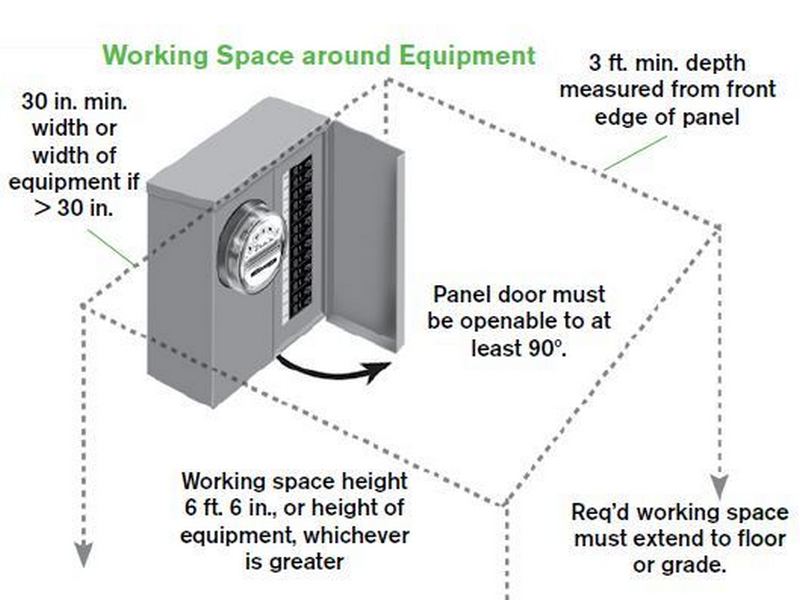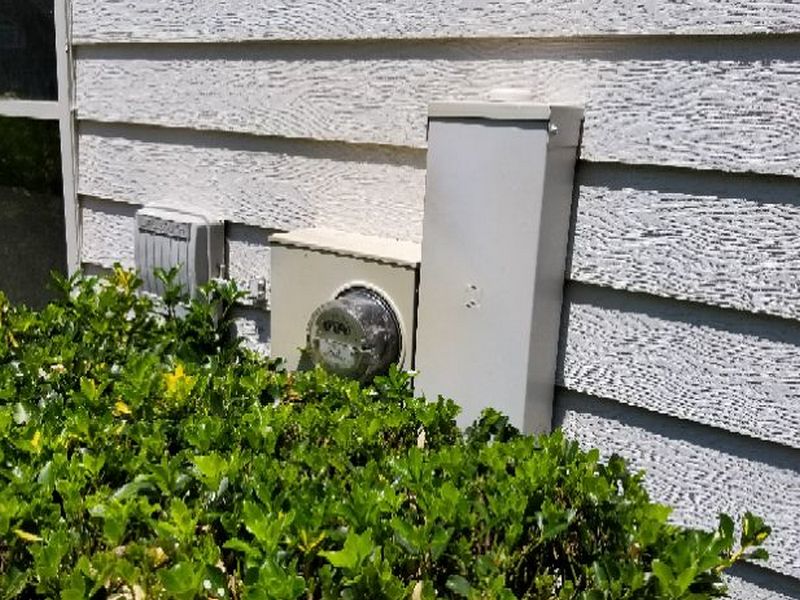The component “Electrical – Service” includes several parts. The Service Drop is the delivery system from the utility’s residential pole or transformer to the house connection point. This may be overhead or underground. This is usually, but not always, completely the utility’s responsibility. The Service Entrance Conductors (SEC) are from the drop’s attachment point on the house to the main disconnect. This is generally the homeowner’s responsibility, and certainly so from the output of the meter to the main disconnect. If the service drop is underground, or a “lateral”, there may not be a visible SEC.
Inspect the service for clearances, condition, and capacity. All of these are safety issues, and must be evaluated regardless of who is responsible. Always exercise extreme caution, especially when using ladders, or on roofs near the service drop. Visually check the condition of the insulation. Secure attachments are essential. Be alert to installations that will allow water penetration into the meters, disconnects, conduits, or cable sheathing. Remember: the smallest capacity “link” in the wiring chain sets the maximum safe amperage for the overall system.
Proper clearances around electrical service conductors are fundamental for safety. Often, these safe distances are compromised due to aging and sagging components, damage, and renovations. It is not unusual for a new addition or deck to reduce what were once safe clearances to a hazardous condition.
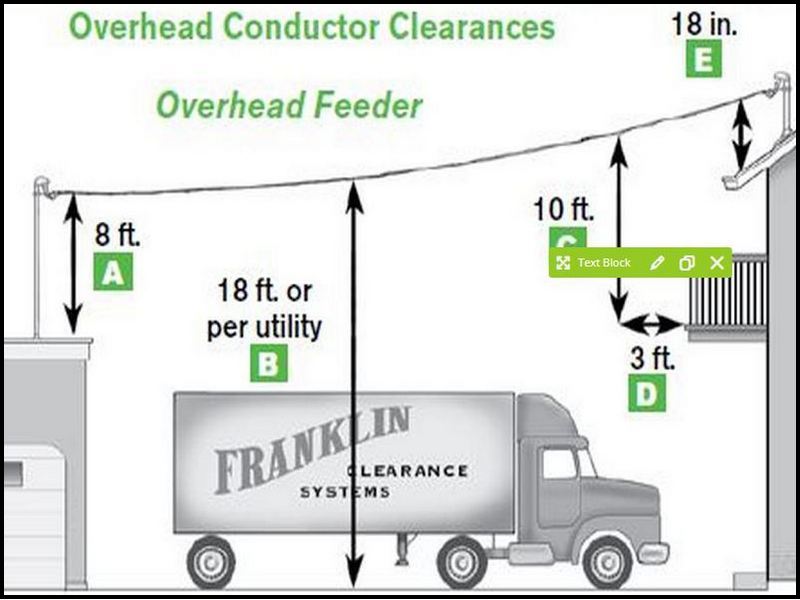
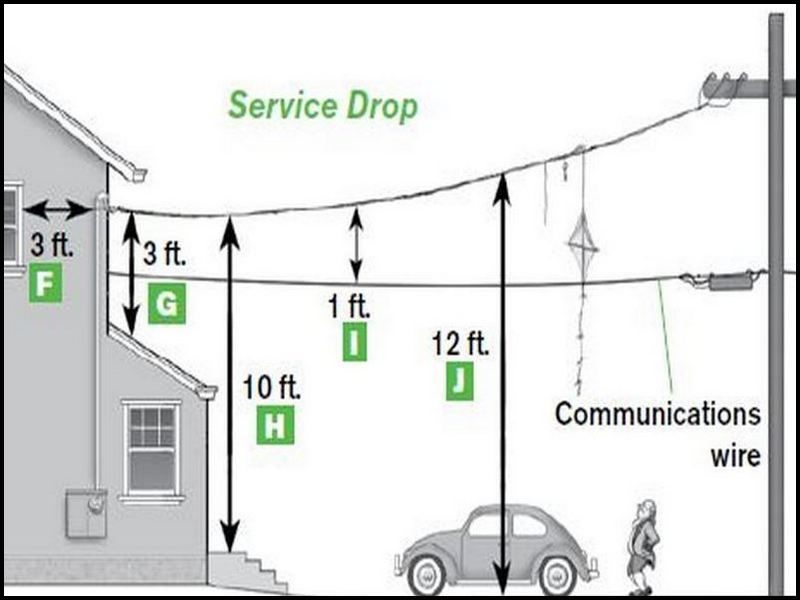
The entrance cable is in contact with tree limbs. This is a safety hazard. Hire a contractor to remove the tree limbs.
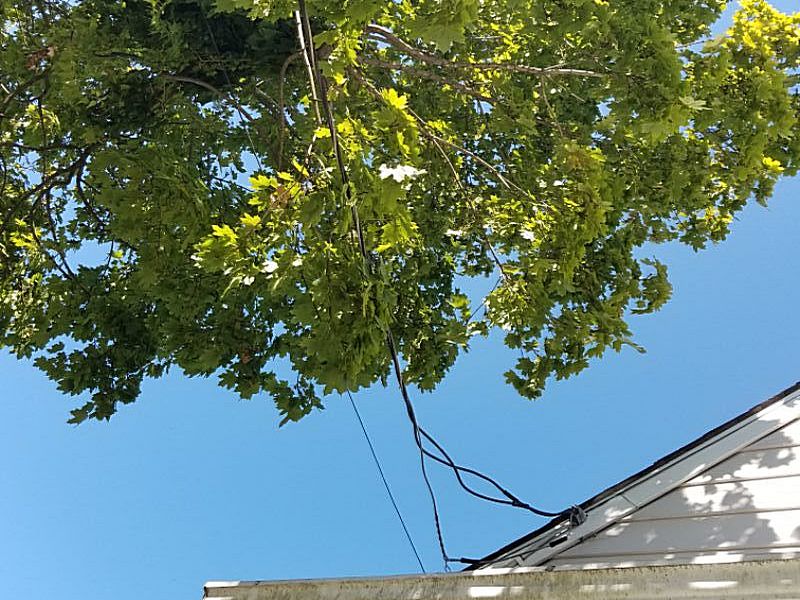
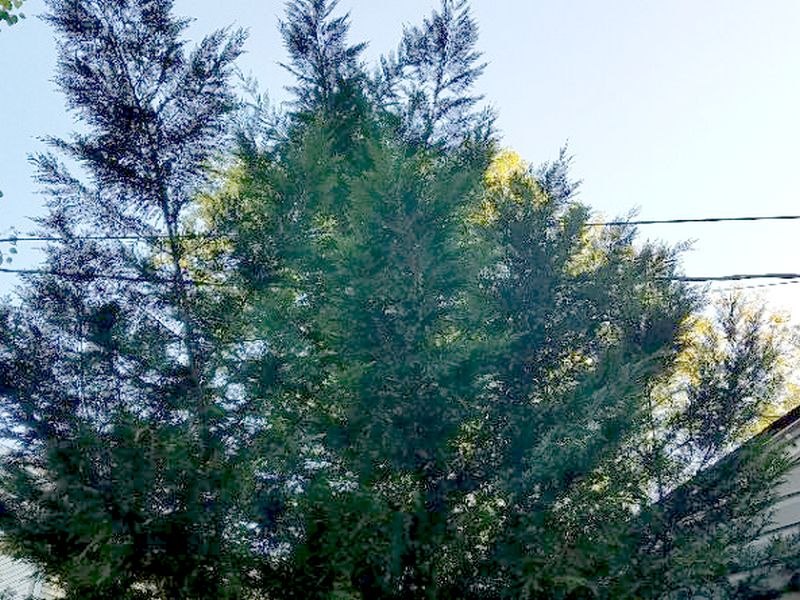
The entrance cable is too low or lacks sufficient clearance from other objects. This is a safety hazard. Hire an electrician to raise the cable and/or remove obstructions.
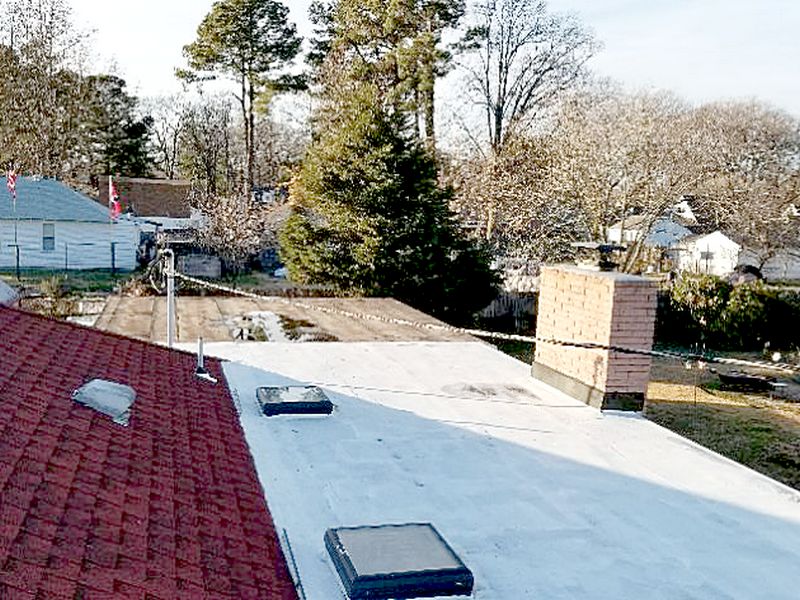
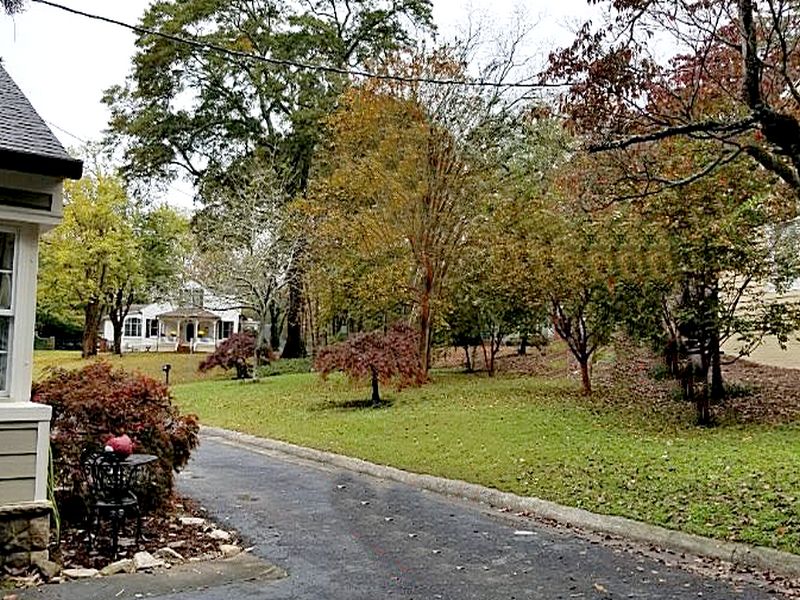
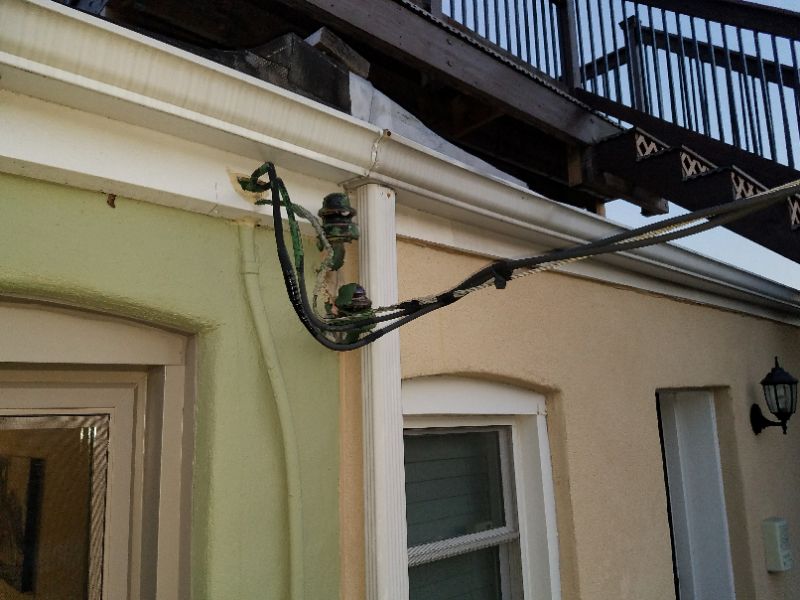
When judging the current capacity of service cable, remember that overhead drops are “air cooled.” This permits a smaller cable to safely handle more electricity than a comparable cable not in the air.
100 amp SEC

150 amp SEC

200 amp SEC

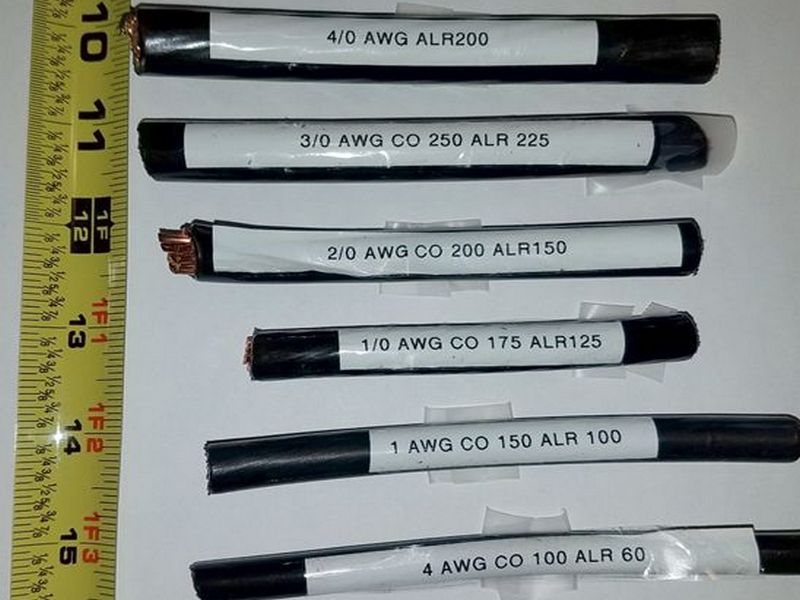
The entrance cable is improperly secured. This is a safety hazard. Hire an electrician to properly secure the cable.
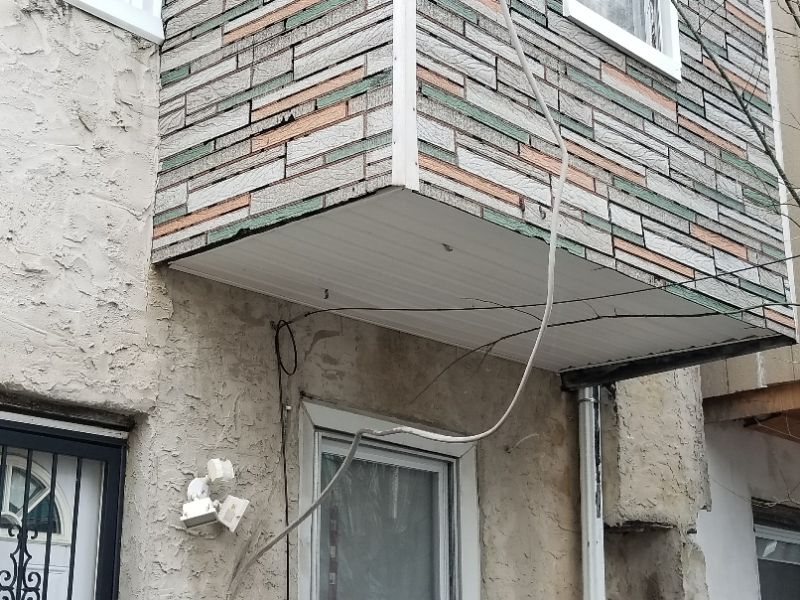
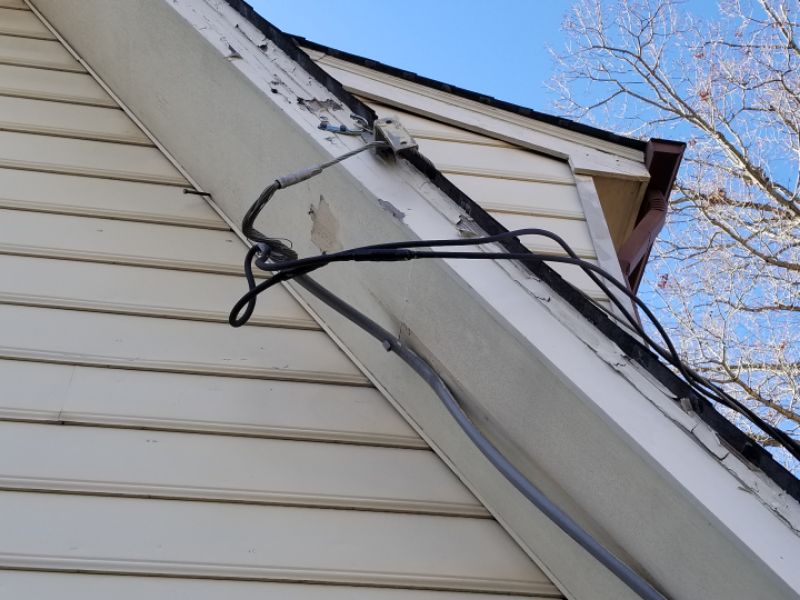
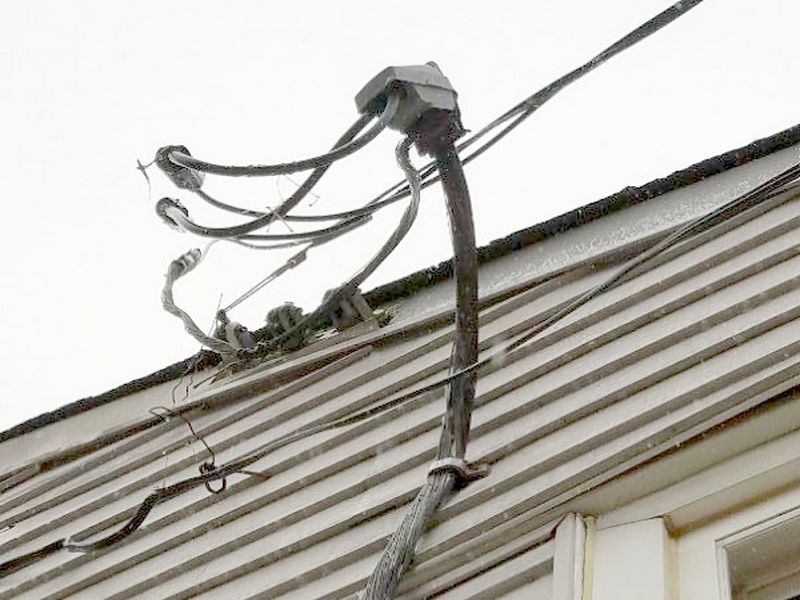
The entrance cable mast is damaged. This is a safety hazard. Hire an electrician to repair the cable mast.
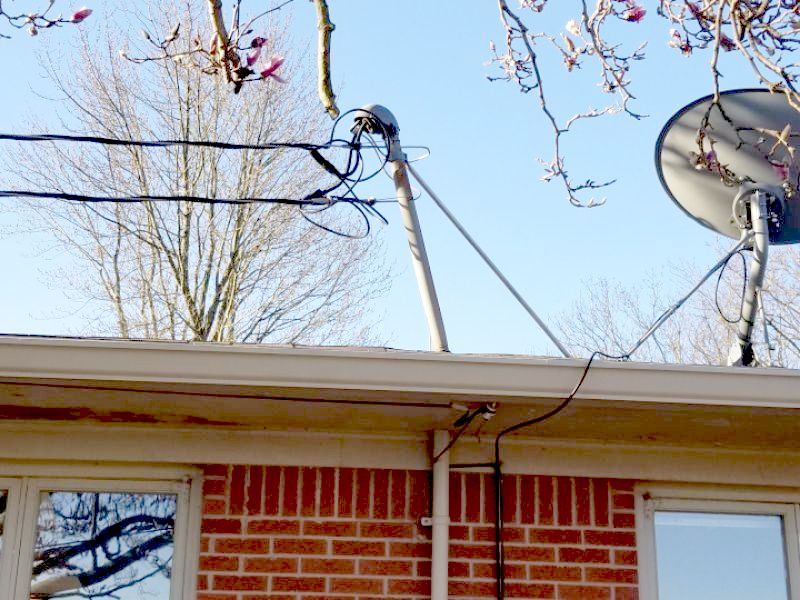
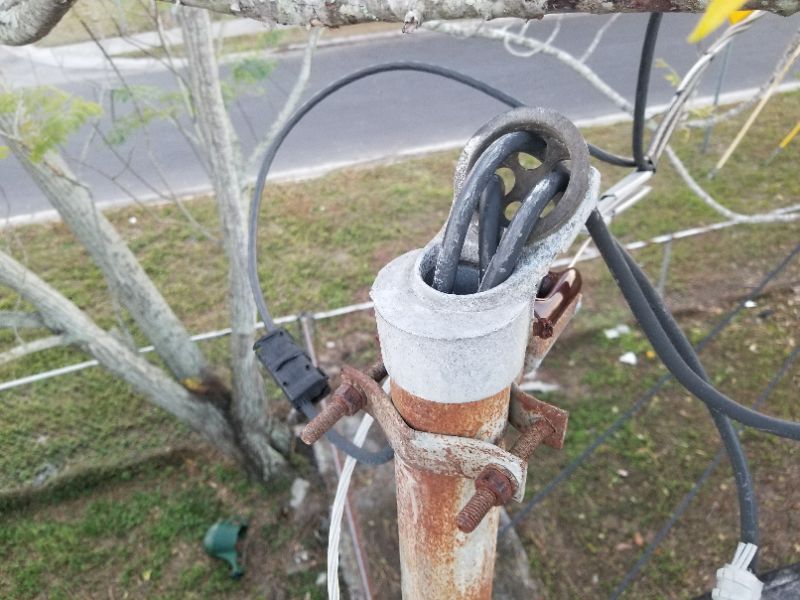
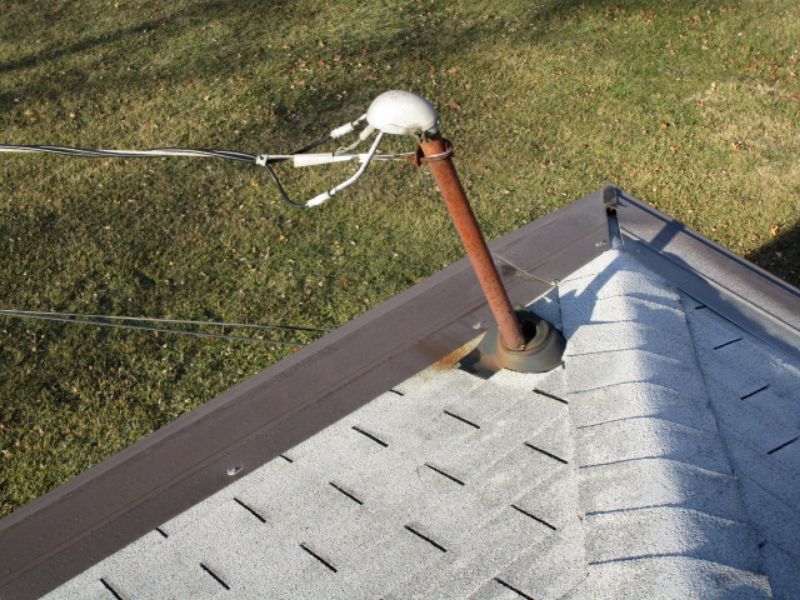
The entrance cable is missing a drip loop. Drip loops prevent water from entering the wiring or conduit. Hire an electrician to install a drip loop.
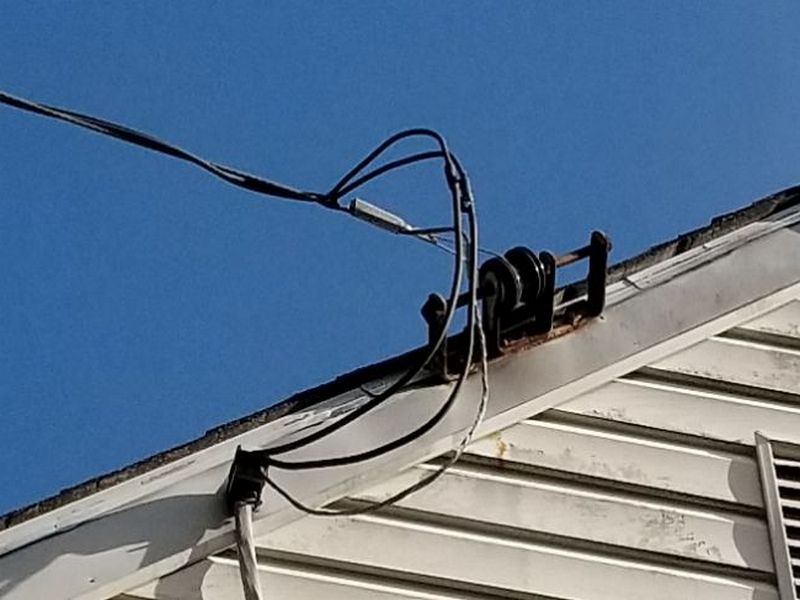
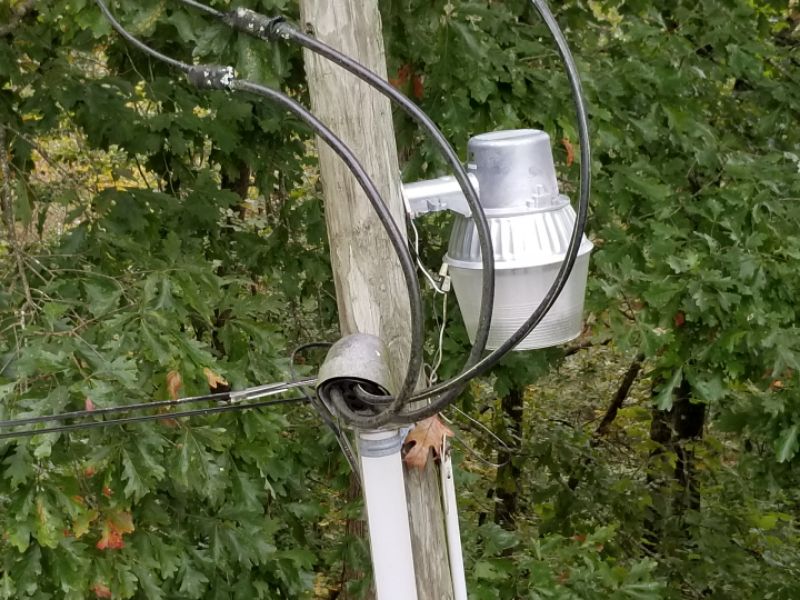
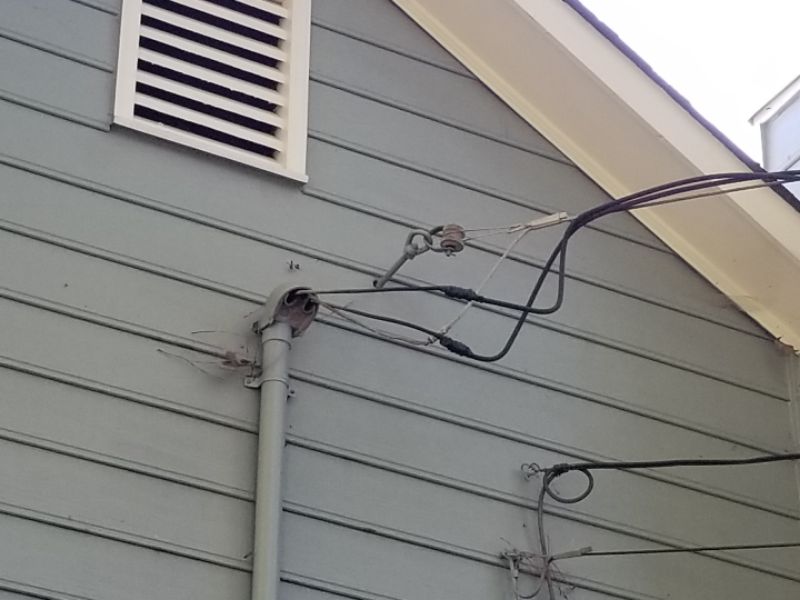
The entrance cable has exposed splices. This is a safety hazard. Hire an electrician to repair the cable.
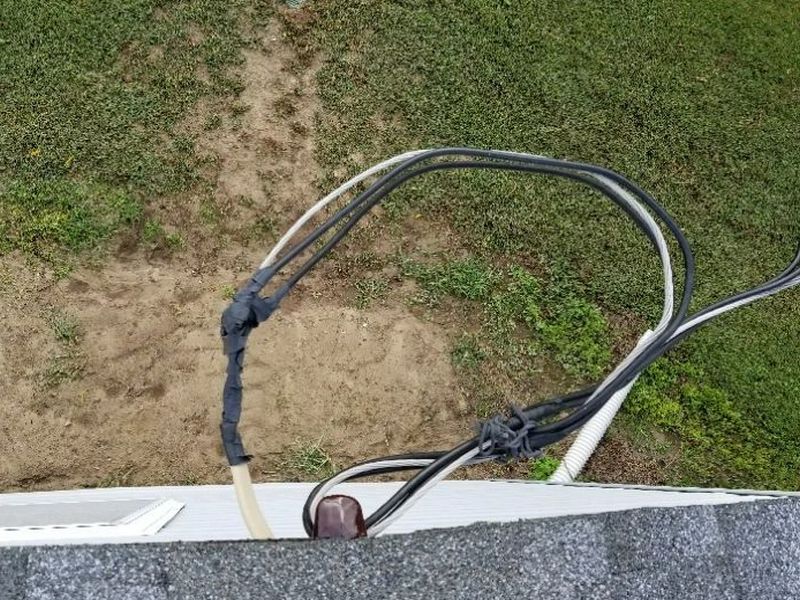
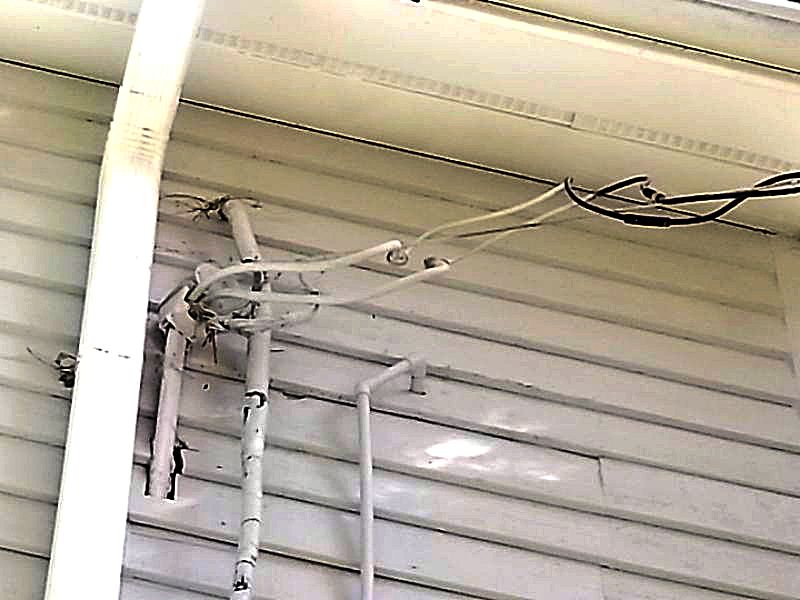
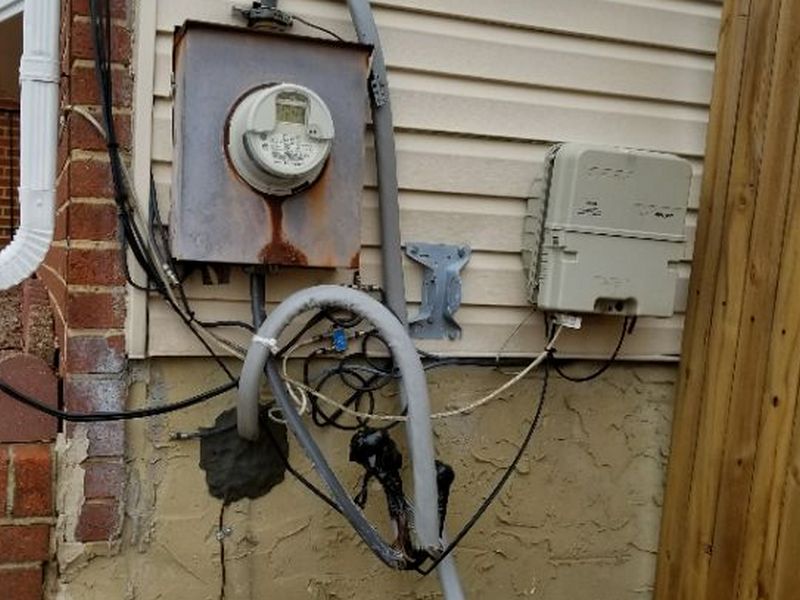
There is deteriorated insulation on the service entrance cable. This is a safety hazard. Hire an electrician to replace the insulation or the cable as needed.
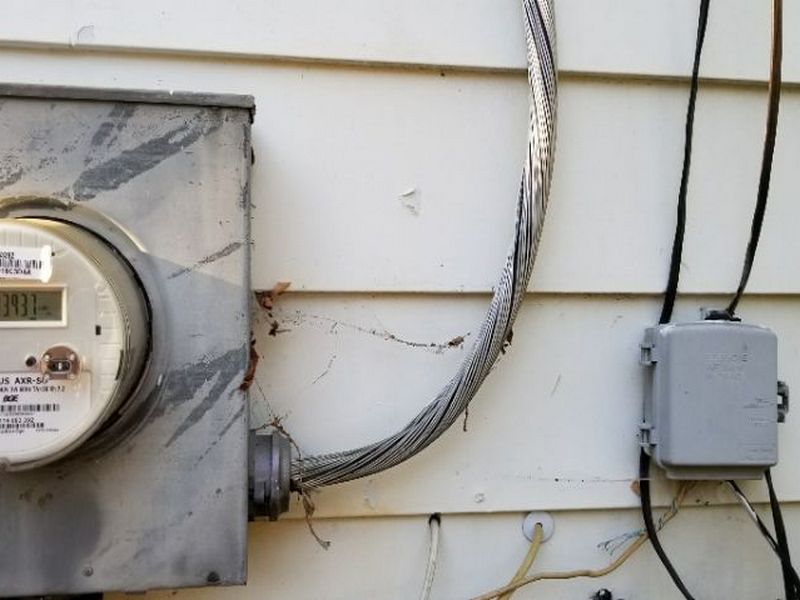
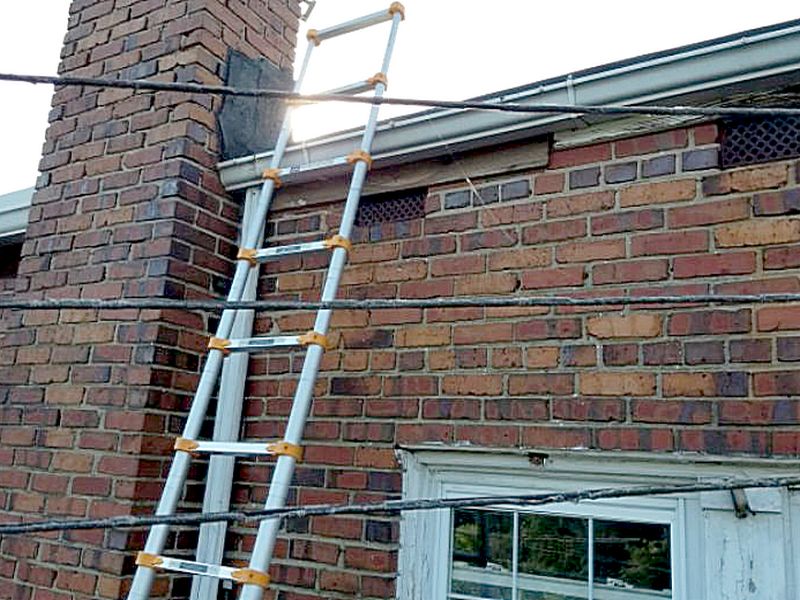

The entrance cable is inadequately sealed where it enters the house. This permits moisture to enter the electrical system. Seal the gaps.
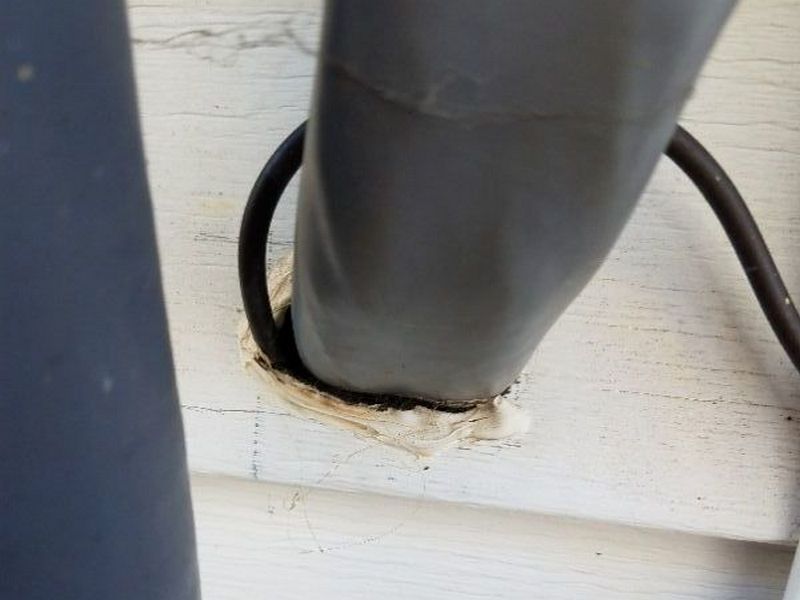
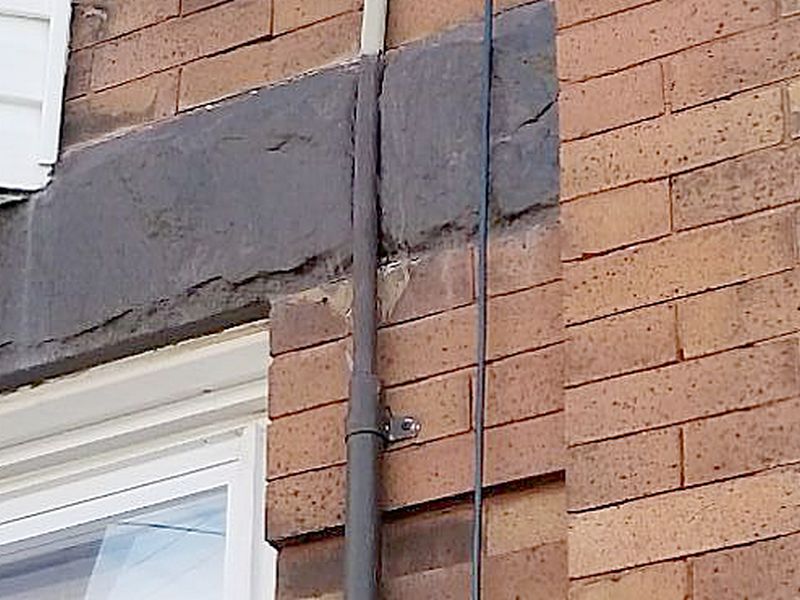
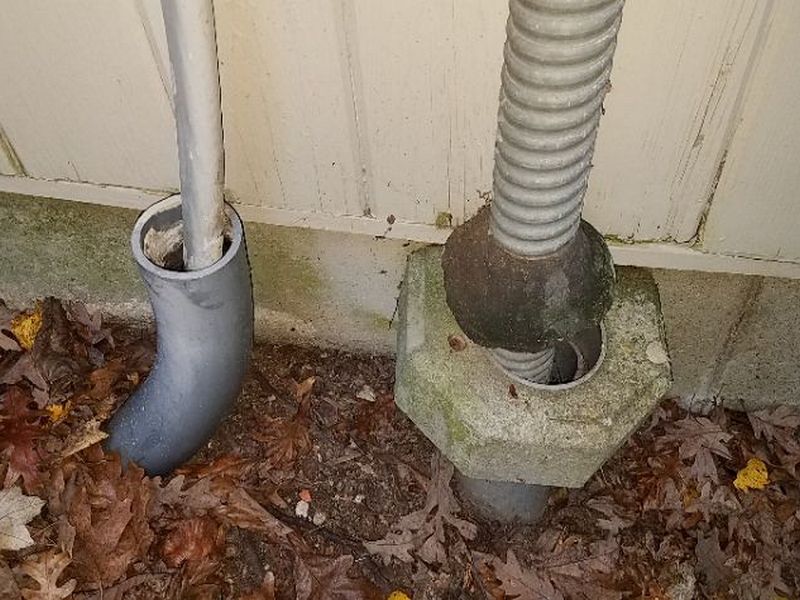
The electrical service cable appears to be rated for less amperage than is servicing the main panel. This is a fire and safety hazard. Hire an electrician to make the needed repairs.
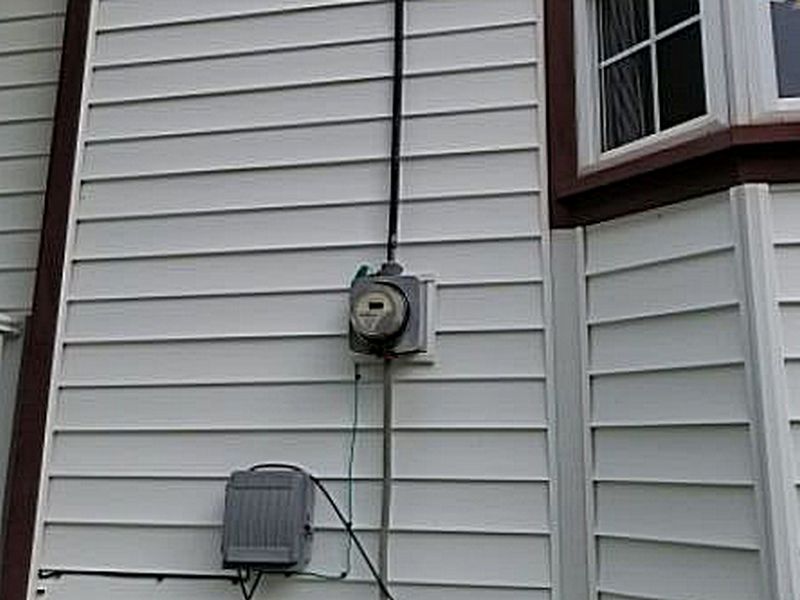
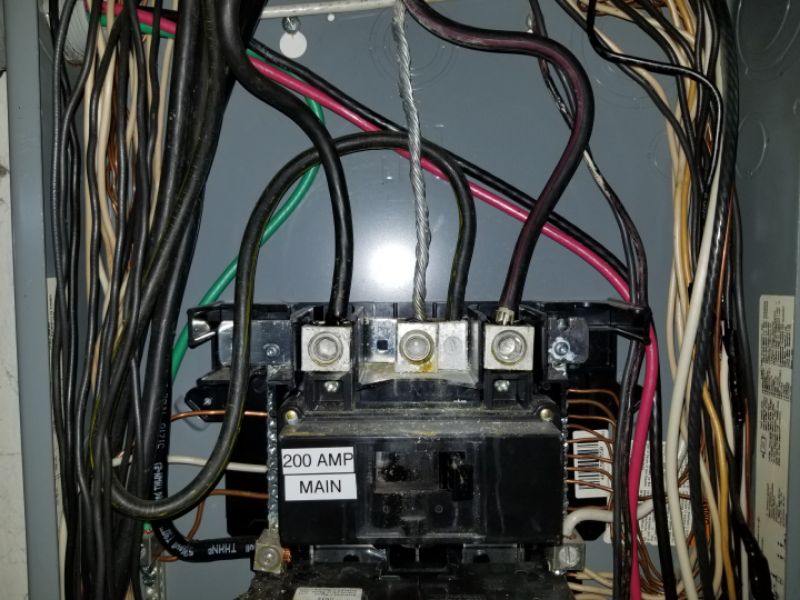
Meters and meter bases must also be inspected for proper capacity. Meters are generally clearly marked with their rating. Most current meters are 200 amps. Older homes will be the exception. They are installed by the utility company. Meter base sizes are trickier to determine. They are usually provided to the homeowner for their electrician to install. They are rated, but you would have to open one up to know for sure. Additionally, the utility company installs the meter on the base that they provide or is present on site. They are responsible. All you can do is observe and recommend if you think a mismatch exists that may be dangerous. It is not unusual to see a 200 amp meter on a smaller meter base.
100 amp meter

200 amp meter
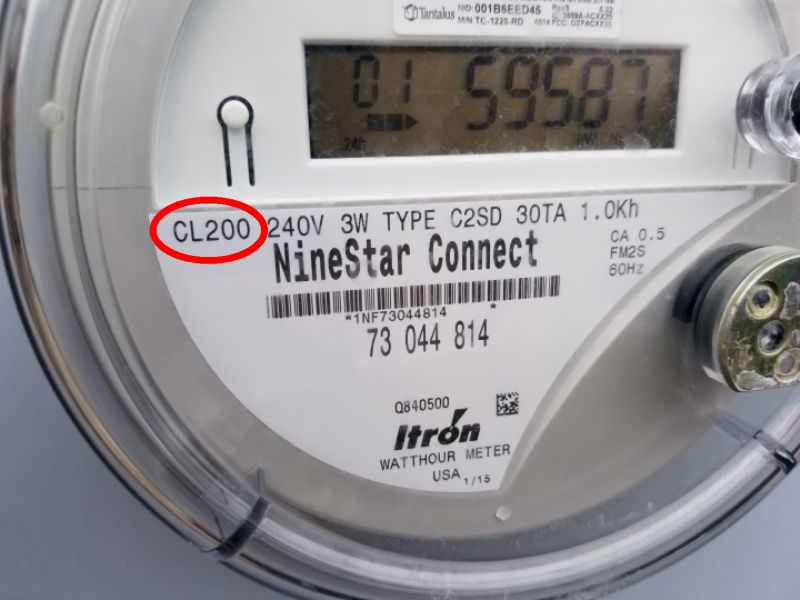
60 amp meter base

125 amp meter base
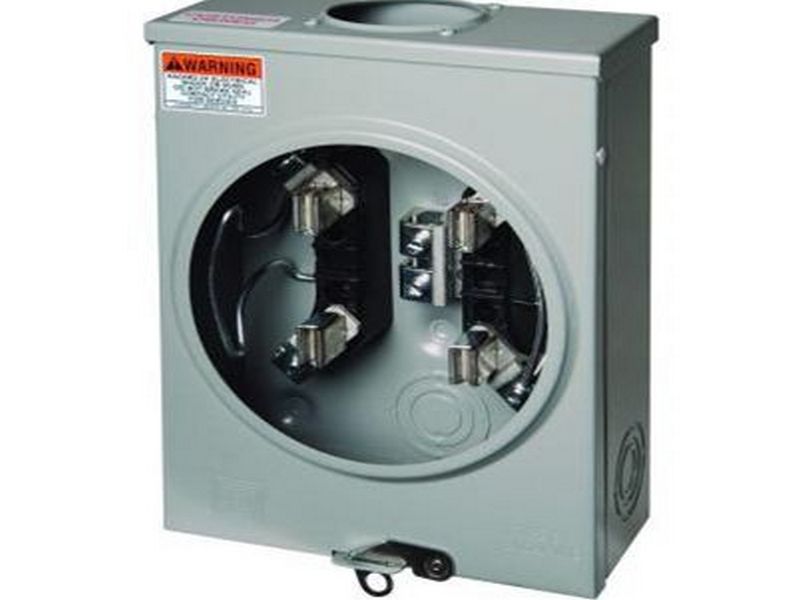
200 amp meter base
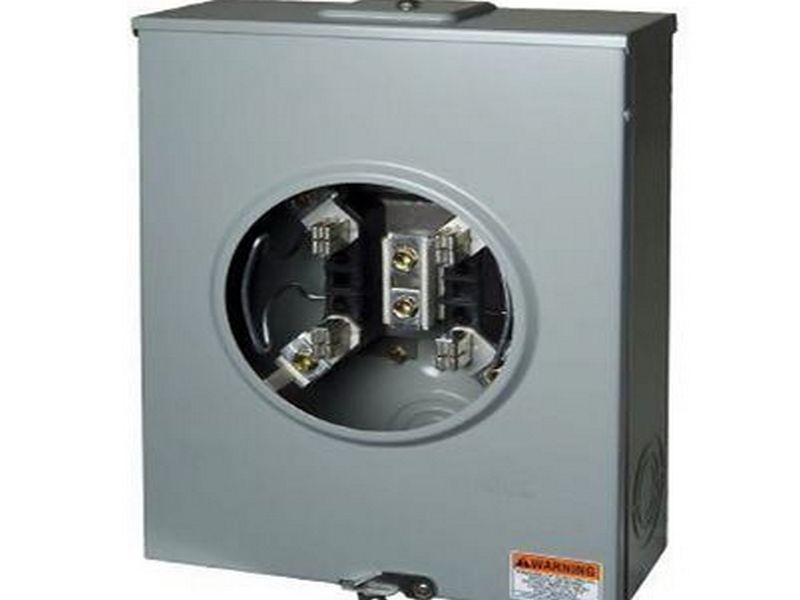
The meter is improperly secured to the building. This is a safety hazard. Hire an electrician to secure the meter.
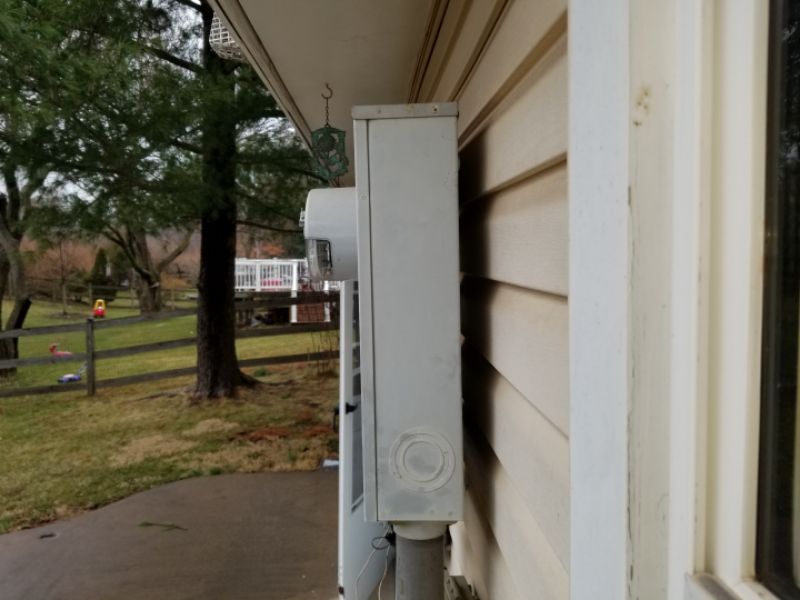
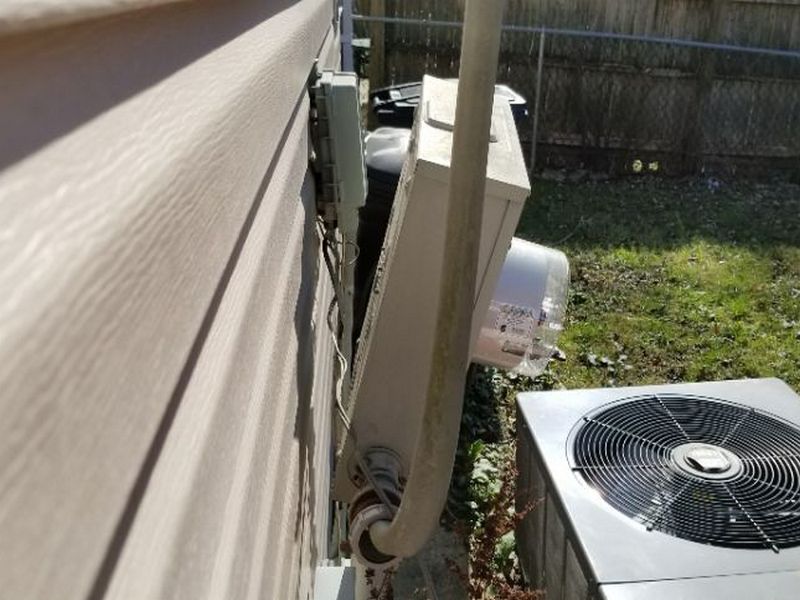
The conduit is disconnected at the service cable and meter junctions. This permits moisture to enter the electrical system. Hire an electrician to connect the conduit.
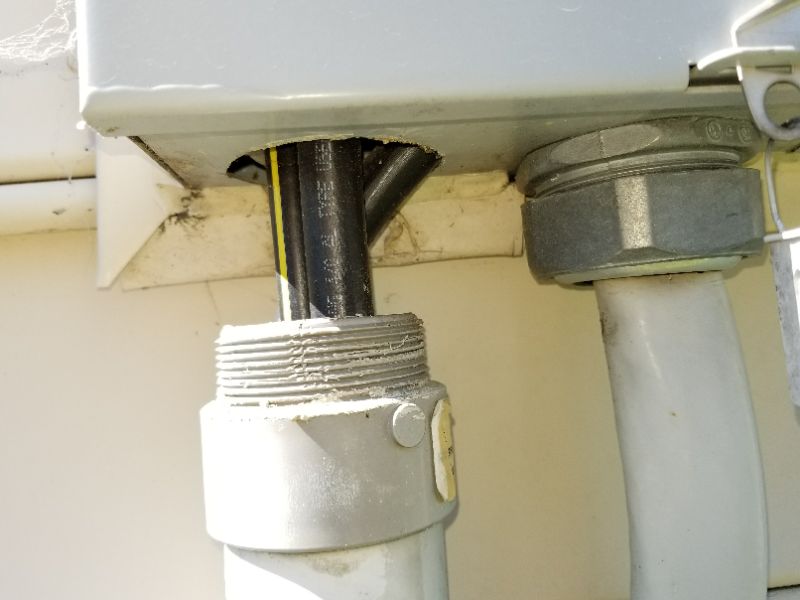
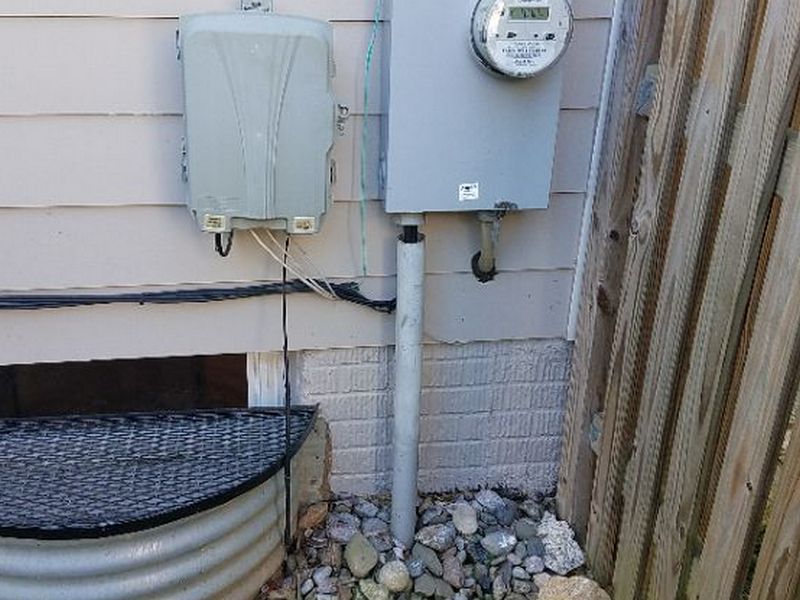
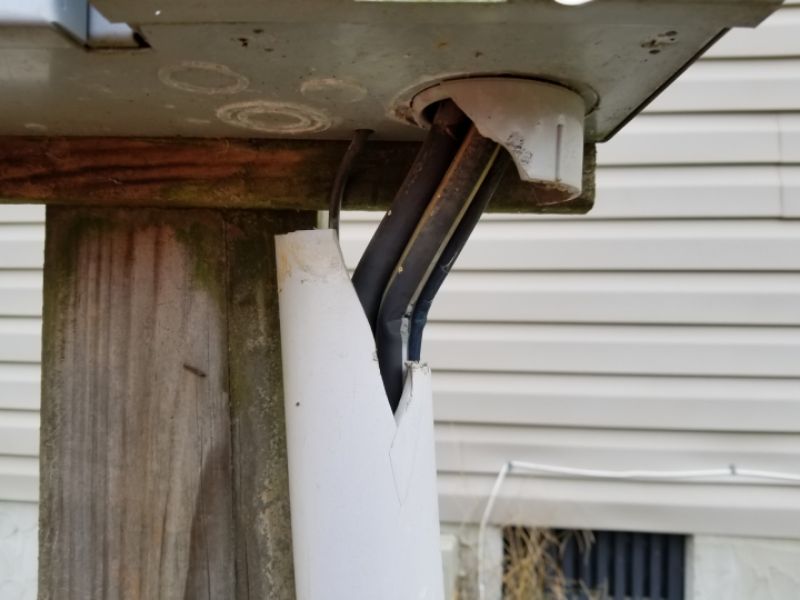
The meter box is damaged. This is a shock hazard. Hire an electrician to replace the meter box.
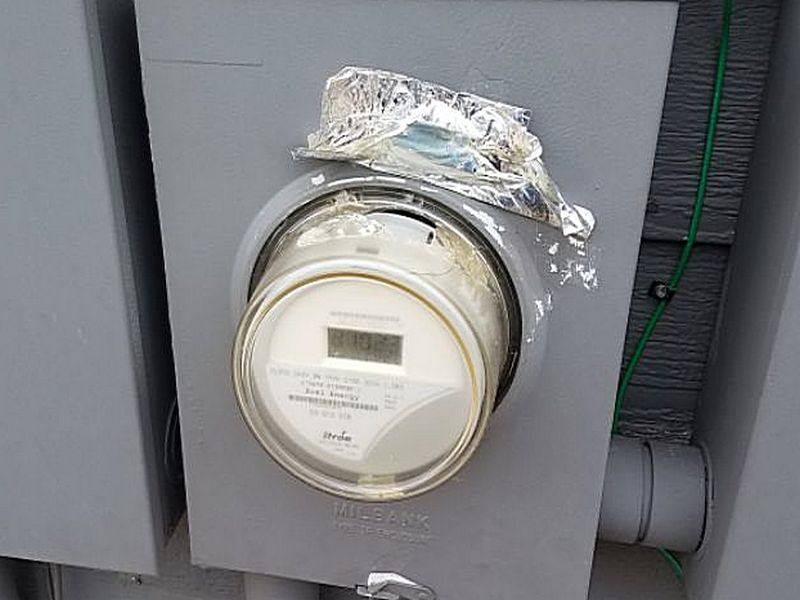
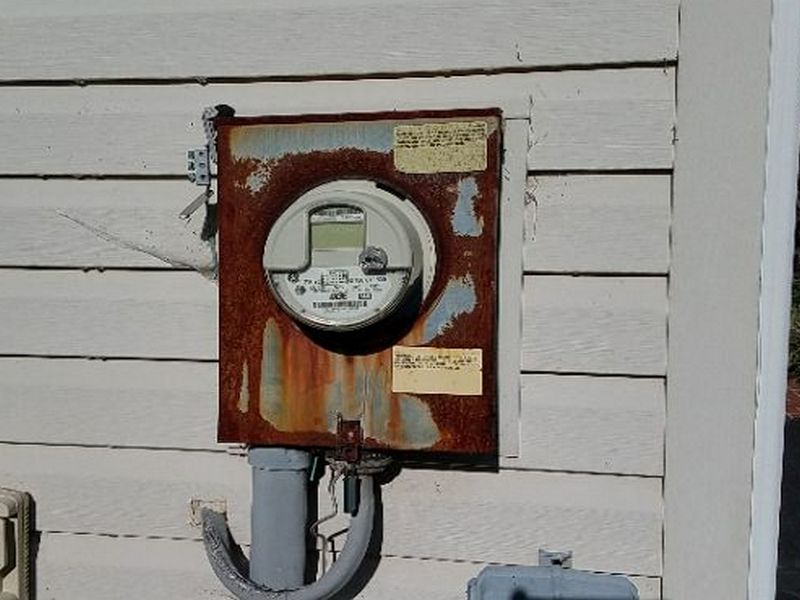
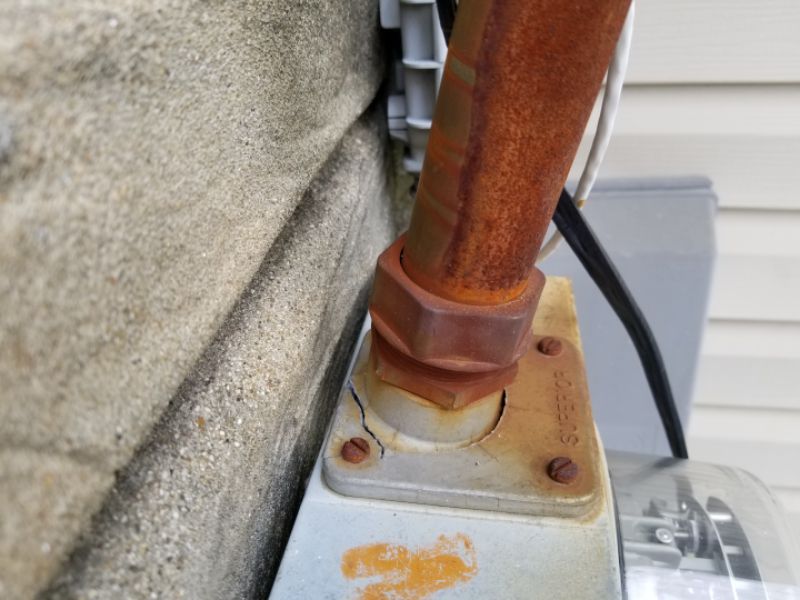
The meter box is open and the interior is exposed. This can be a significant shock hazard, and can allow water and pest intrusion. Hire an electrician to repair or replace the meter box.
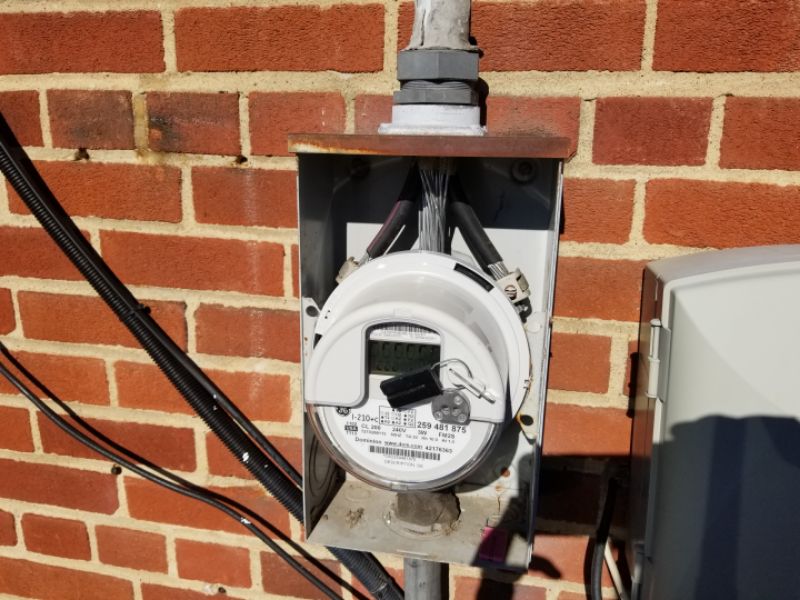
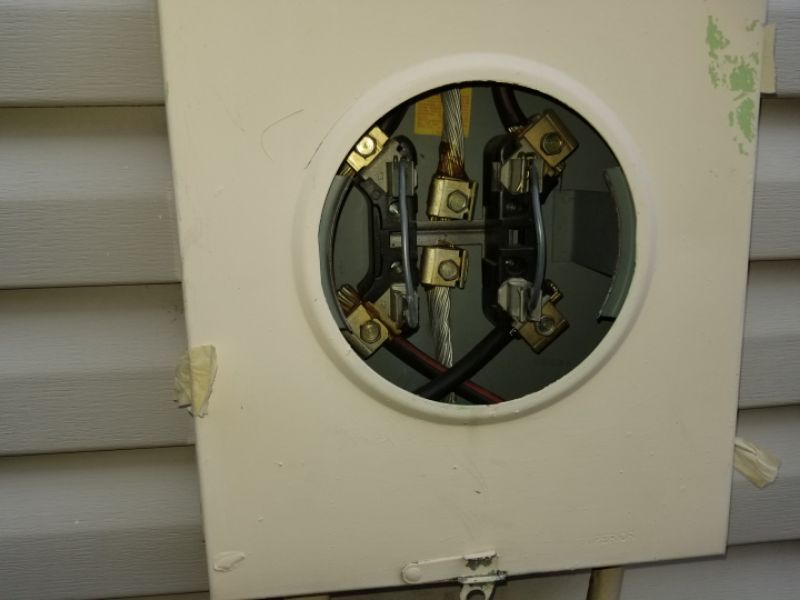
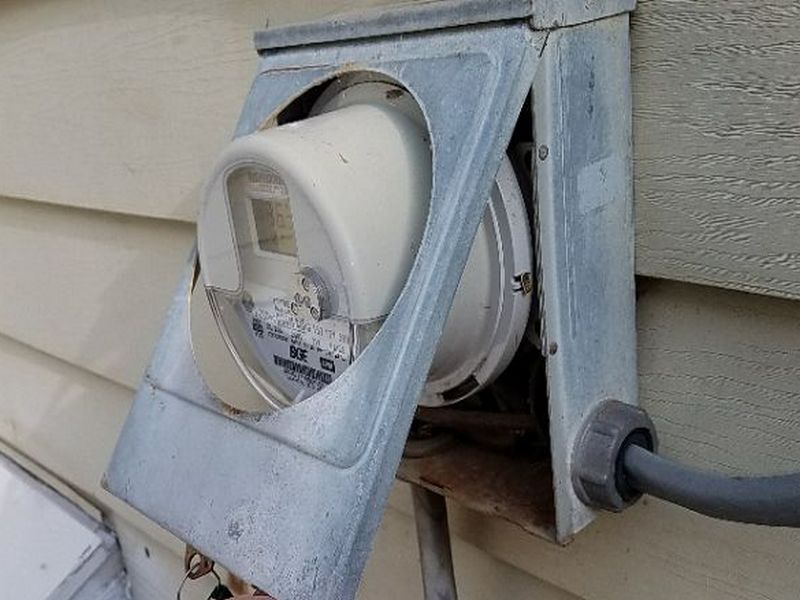
The meter seal is damaged. This permits moisture to enter the electrical system. Hire an electrician to replace the seal.
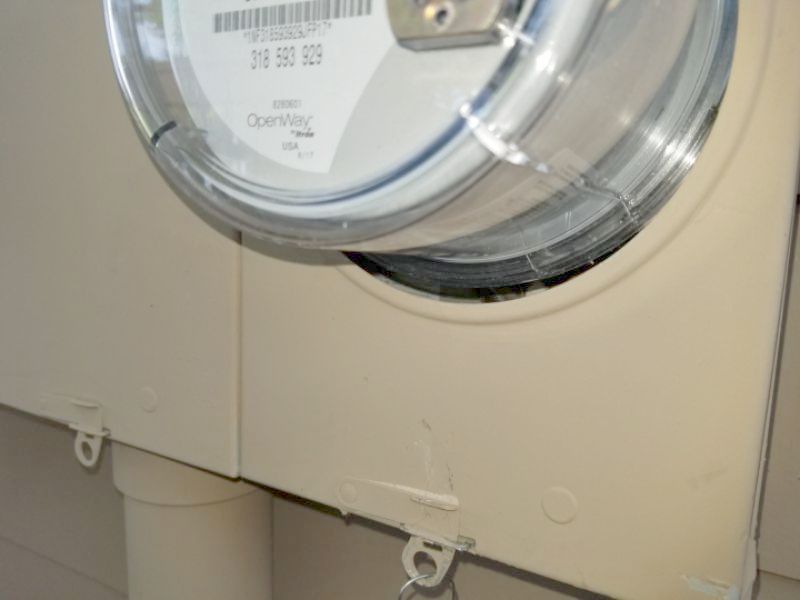
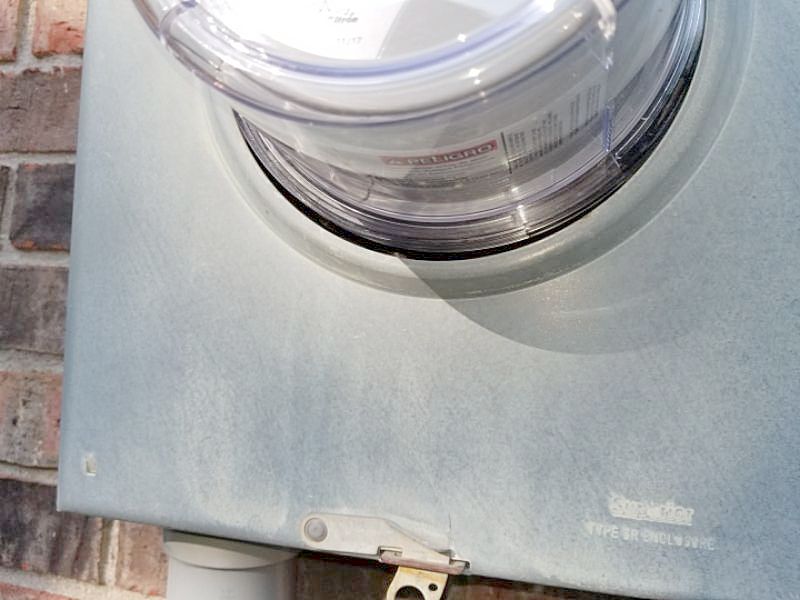
The sealant where the SEC enters the meter base is damaged or deteriorated. This is a safety hazard that permits water to enter the enclosure. Hire an electrician to make the needed repairs.
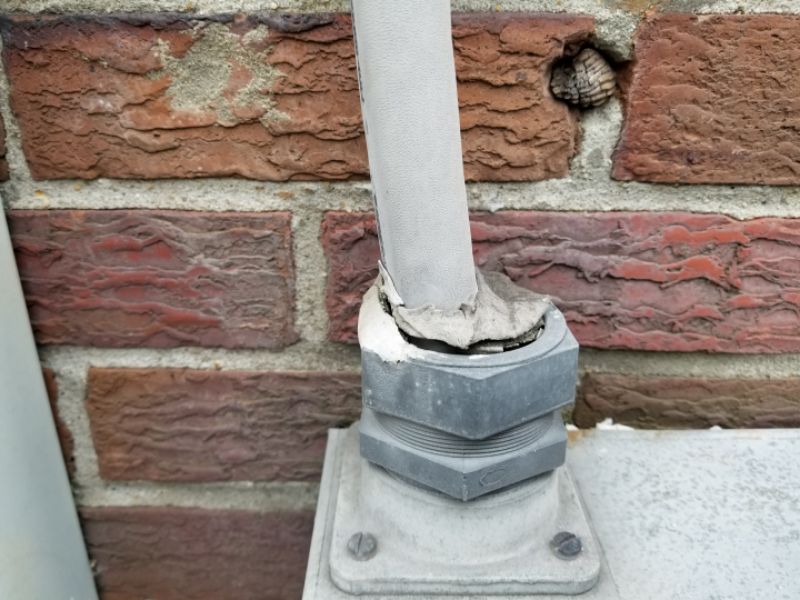
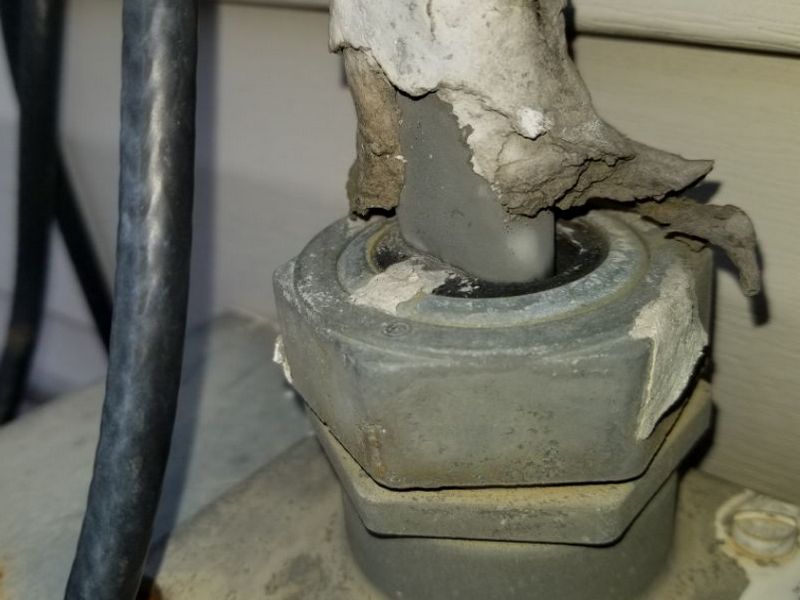
The power company seal tab for the electrical meter is missing. The purpose of the seal is to prevent or indicate tampering with the meter. Have the local power company install a seal tab for the meter.


The disconnect box is not adequately secured to the structure. This can cause loose connections and is a safety concern. Hire an electrician to make the needed repairs.
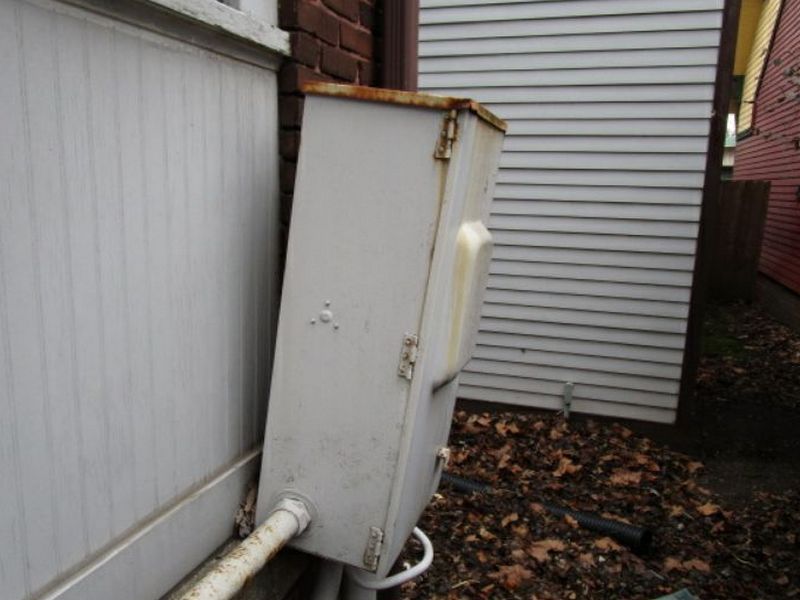
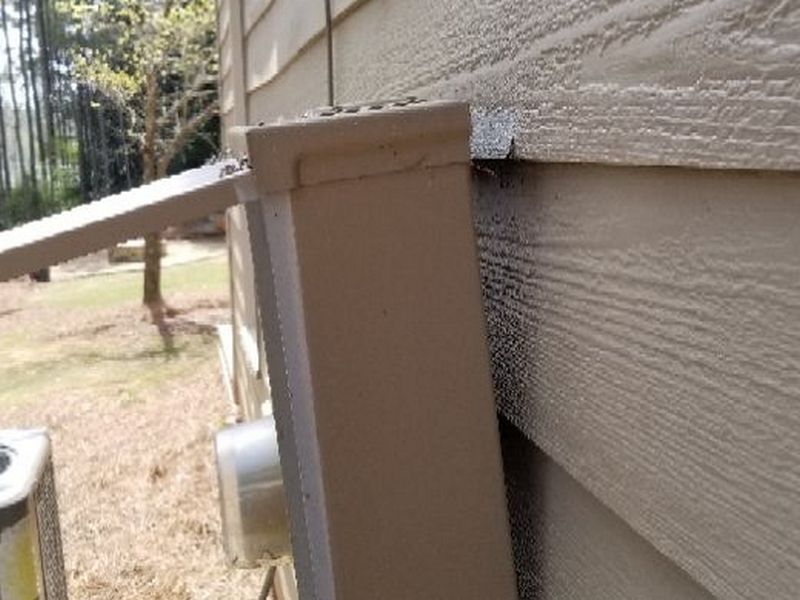
The disconnect box is rusted. This is a safety and reliability concern. The extent of the corrosion cannot be determined. Hire an electrician for an evaluation and to make repairs as needed.
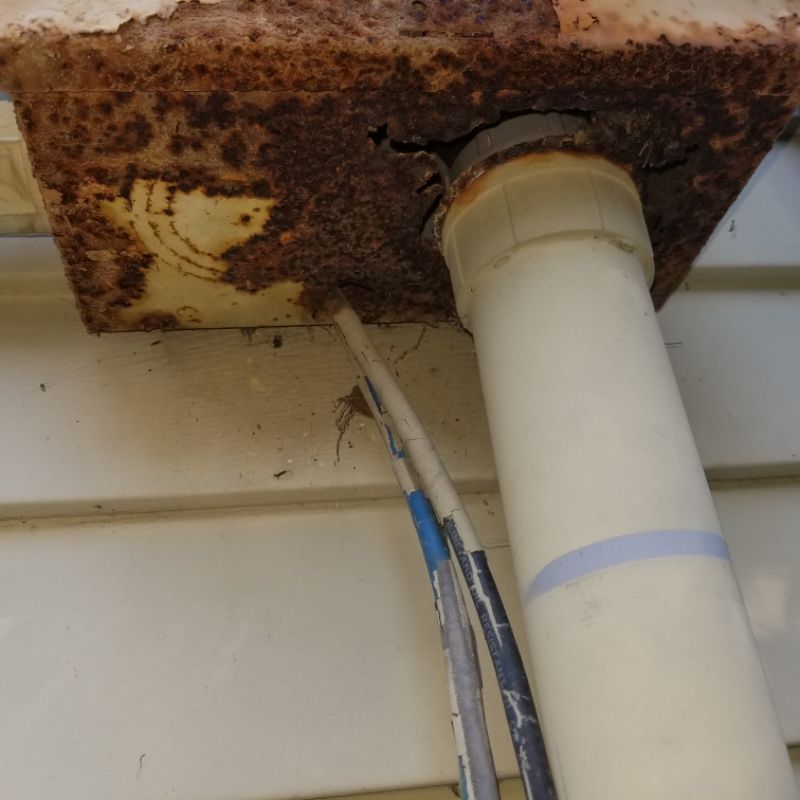
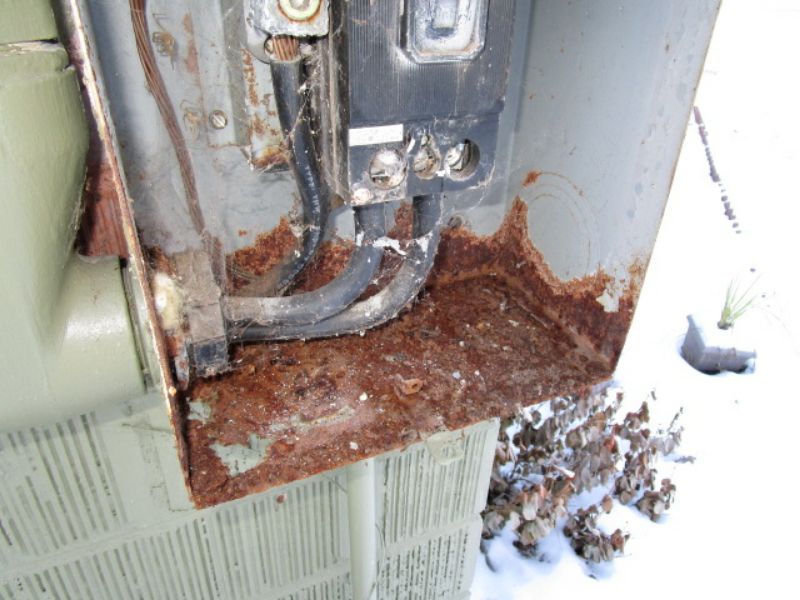
The disconnect box does not properly close to form a weatherproof enclosure. This is a safety concern and a shock hazard. Hire an electrician to make the needed repairs.
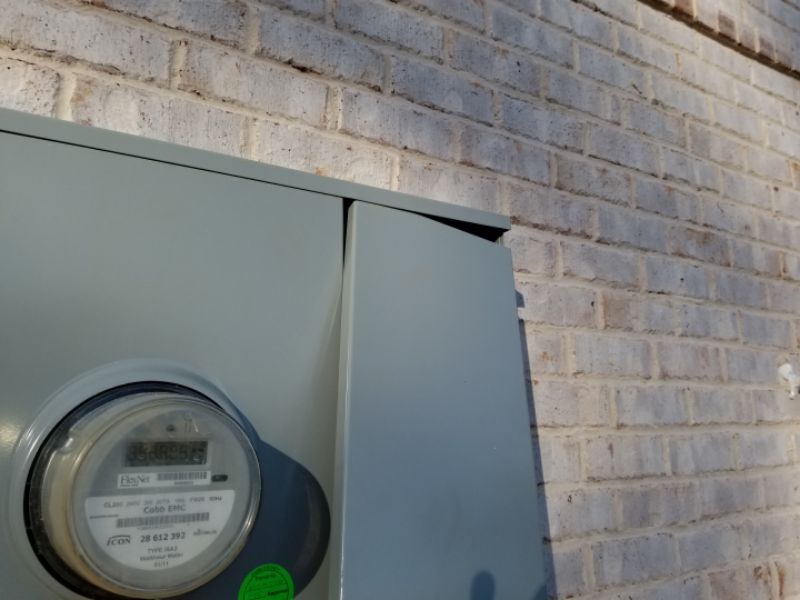
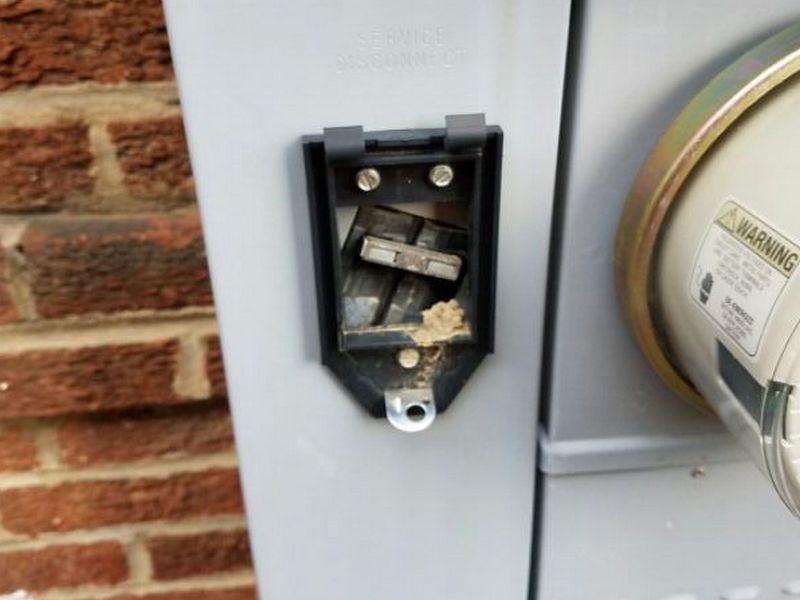
There are obstructions to the main electrical disconnect. The disconnect needs to be readily accessible in an emergency for safety reasons. Remove the obstructions.
